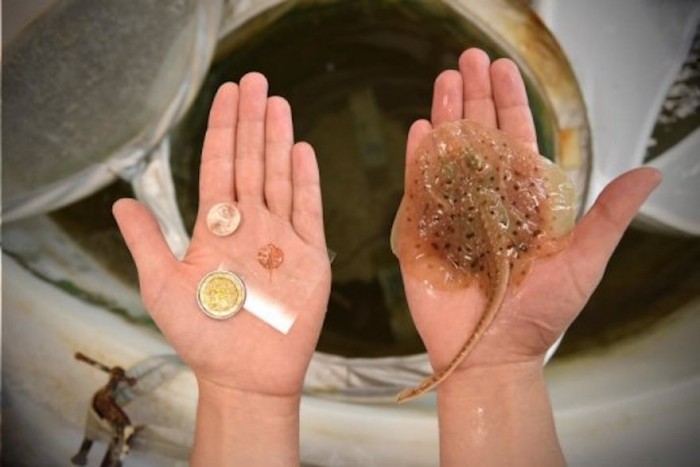
It’s a robot but it’s also alive. Its skeleton is made of gold and its body, designed to emulate the fins of a stingray, is covered in approximately 200 000 living rat heart cells. Despite being powered by a rat heart, the cyborg stingray is not something out of a mad scientist’s laboratory. The brainchild of bioengineer Kit Parker from the Wyss Institute at Harvard University, the creation is the first robot to use living cells instead of electronics to move.
The 10-gram creature is the size of a small coin. Its gold skeletal structure is overlaid with a polymer made of rat heart cells that were genetically engineered to respond to light cues, prompting the fin movements that propel the robot through water.
Speaking to NPR, Parker explains that the cyborg is a training exercise: "I want to build an artificial heart, but you're not going to go from zero to a whole heart overnight. This is a training exercise," Parker was quoted as saying. "The heart's built the way it is for a reason. And we're trying to replicate as much of that function as we possibly can."
Tiny ray-rat is the first and the last of its kind. The researchers believe they have learned all there is to know about the cyborg. "We turned a rat into a light guided stingray," Parker told Popular Mechanics. "Hell, all [people] need to know is that this is the coolest thing they're going to see all year."







